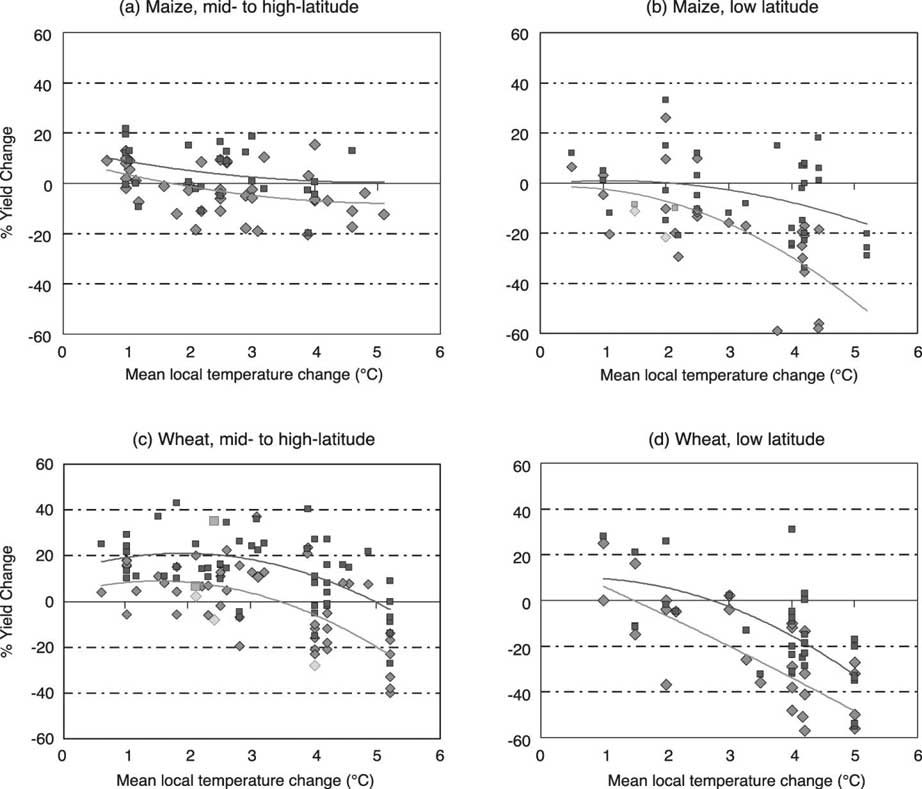
| Previous | Return to table of contents | Search Reports | Next |
| « Back to weltagrarbericht.de | ||
Outlook on Agricultural Changes and Its Drivers | 287
slight warming (Figure 4-25) because they are currently grown under conditions close to maximum temperature tolerances. Adaptation gives tropical regions a buffer of approximately 3°C of warming before yields of wheat, maize and rice decline below current levels. |
|
ginal mixed (crop-livestock) and pastoral systems in parts of the Sahel, East Africa, and southern Africa. In some areas, growing seasons may contract, and crop and forage yields may decline substantially as a result (Jones and Thornton, 2003). Vulnerable households in such places will need to adapt considerably if food security and livelihoods are to be preserved or enhanced. 4AAA Climate change mitigation and agriculture |

Figure 4-25. Sensitivity of cereal yield to climate change. Source: IPCC, 2007.
The diamond markers indicate studies reporting responses without adaptation; the block markers indicate
studies reporting responses with adaptation. The lower line in each panel provides the trend line for the
studies without adaptation; the upper line provides the trend line for studies with adaptation. The studies on
which the figure is based span a range of precipitation ranges and CO2 concentration and vary in the way
how the present changes in climate variability.
| Previous | Return to table of contents | Search Reports | Next |
| « Back to weltagrarbericht.de | ||